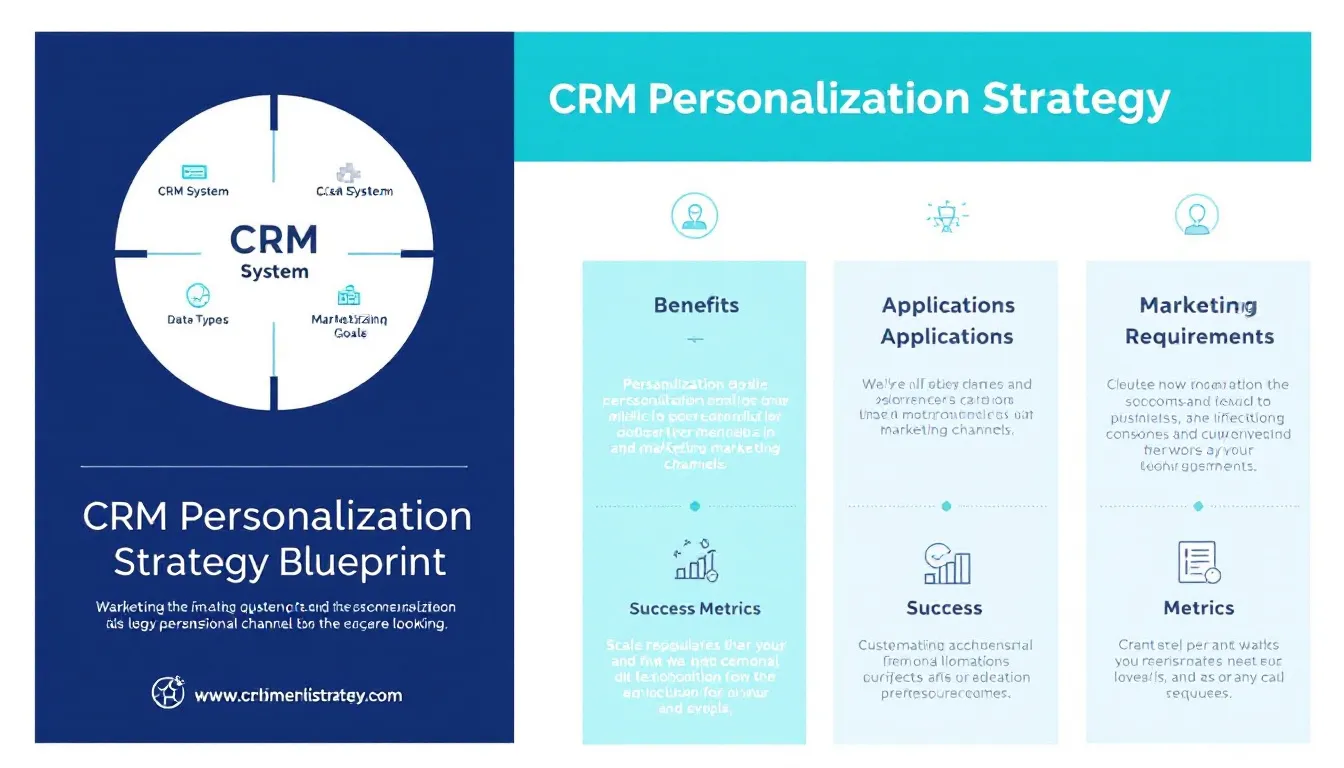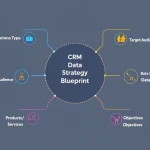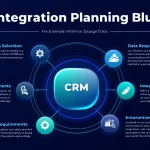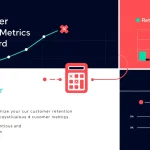Generating strategy...
Is this tool helpful?
How to Use the CRM Personalization Strategy Generator Effectively
To get the most from the CRM Personalization Strategy Generator, provide clear, detailed input in each section. Below are instructions and sample entries to guide you in filling out the form accurately.
1. Current CRM System
Type the name of your active CRM platform. This helps the tool tailor recommendations to your technology. Sample inputs include:
- Oracle CX Cloud
- Pipedrive
2. Available Customer Data Types
Select all types of customer data your CRM stores. This may include demographics, behaviors, or transaction records. Examples:
- Demographic Data (age, location, industry)
- Engagement Metrics (click rates, session duration)
3. Personalization Objectives
Describe your specific goals for personalization. Be clear and focused for best results. Sample inputs are:
- Boost email open rates by 20%
- Decrease cart abandonment by 10%
4. Marketing Channels to Personalize
List the primary customer touchpoints where you will apply personalization strategies. Consider channels such as:
- SMS campaigns and push notifications
- Live chat and chatbot interactions
5. Scale Requirements
Enter the number of customers you plan to engage with your personalization efforts. For example:
- 5,000 active subscribers
- 20,000 monthly users
What Is the CRM Personalization Strategy Generator?
The CRM Personalization Strategy Generator is a practical tool that turns your existing customer relationship management data into actionable strategies for personalizing customer experiences. It analyzes your input and provides tailored recommendations on how to enhance your marketing campaigns, improve customer engagement, and scale personalized communications efficiently.
Purpose and Benefits
This tool helps you:
- Align personalization efforts with your business goals to ensure relevant and impactful customer interactions.
- Leverage customer data effectively by identifying high-value data points and applying them where they matter most.
- Integrate personalization across marketing channels such as email, website, social media, and direct messaging.
- Scale your personalization strategies to reach larger audiences without losing customization quality.
Key Components Evaluated by the Tool
- Data Utilization Potential: How to maximize use of different customer data types.
- Channel Integration Opportunities: Ways to personalize messaging across multiple platforms.
- Implementation Framework: Steps to deploy personalization at scale efficiently.
Practical Use Cases for the CRM Personalization Strategy Generator
Example 1: Real Estate Agency Personalization
Input:
- CRM System: Zoho CRM Plus
- Customer Data: Property preferences, inquiry history, budget range
- Channels: Website, email newsletters, SMS
- Goals: Increase appointment bookings by 15%
- Scale: 2,000 active leads
Generated Strategy:
- Targeted property recommendations based on individual preferences
- Personalized follow-up email sequences after site visits
- SMS reminders for scheduled viewings and new listings
Example 2: SaaS Company Customer Engagement
Input:
- CRM System: Freshsales
- Customer Data: Feature usage, support requests, subscription plans
- Channels: In-app notifications, email, customer support portal
- Goals: Improve user onboarding completion rates by 25%
- Scale: 15,000 active users
Generated Strategy:
- Personalized onboarding tips triggered by product usage patterns
- Behavior-based email nurtures recommending premium features
- Proactive support outreach based on ticket trends
Benefits of Using the CRM Personalization Strategy Generator
1. Aligns Your Marketing With Business Goals
You ensure every personalization effort directly supports your objectives, whether it’s customer retention, revenue growth, or brand loyalty.
2. Maximizes Data-Driven Decision Making
You turn scattered customer data into focused strategies that target the right customers at the right time with relevant messages.
3. Enhances Customer Experience Across Channels
You create consistent, personalized interactions across digital and traditional touchpoints, improving satisfaction and engagement.
Addressing Common Challenges With CRM Personalization
Overcome Data Fragmentation
- Identify gaps and duplication in customer data sources
- Get recommendations for data consolidation and integration
- Build unified customer profiles to drive personalization accuracy
Manage Scalability Constraints
- Automate personalization workflows to handle larger customer bases
- Deploy scalable frameworks that adapt as your audience grows
- Leverage dynamic content delivery systems for timely offers
Frequently Asked Questions About CRM Personalization Strategy
Which businesses benefit most from this personalization tool?
Companies across industries that use CRM systems can apply tailored strategies, including:
- B2B service providers seeking targeted upselling
- Retailers wanting personalized promotions
- Nonprofits focusing on donor engagement
- Educational institutions enhancing student outreach
How frequently should I update my personalization strategy?
Regular updates improve results. We recommend:
- Quarterly updates in fast-changing markets
- Bi-annual reviews in stable industries
- Immediate revisions after major CRM or marketing changes
Can I integrate multiple CRM systems with this tool?
Yes, the tool supports strategies that unify data across multiple CRMs, enabling synchronized personalization across platforms and channels.
What defines an effective personalization goal?
Goals should be:
- Specific and measurable: e.g., “Increase click-through rates by 15%”
- Aligned with business focus: support broader company objectives
- Customer-centric: improve experience and relevance
- Time-bound: set deadlines for assessment
How do I measure the success of personalization efforts?
Track key performance indicators such as:
- Customer engagement rates and feedback
- Conversion and sales improvements
- Customer satisfaction and loyalty scores
- Revenue growth attributable to personalization
- Lifetime value changes per customer segment
What resources are required to implement personalization strategies?
Make sure you have:
- Reliable technical infrastructure and CRM integration
- Content creators able to produce targeted campaigns
- Analytics tools for tracking and optimization
- Trained teams to manage and adjust personalization efforts
Important Disclaimer
The calculations, results, and content provided by our tools are not guaranteed to be accurate, complete, or reliable. Users are responsible for verifying and interpreting the results. Our content and tools may contain errors, biases, or inconsistencies. Do not enter personal data, sensitive information, or personally identifiable information in our web forms or tools. Such data entry violates our terms of service and may result in unauthorized disclosure to third parties. We reserve the right to save inputs and outputs from our tools for the purposes of error debugging, bias identification, and performance improvement. External companies providing AI models used in our tools may also save and process data in accordance with their own policies. By using our tools, you consent to this data collection and processing. We reserve the right to limit the usage of our tools based on current usability factors.







